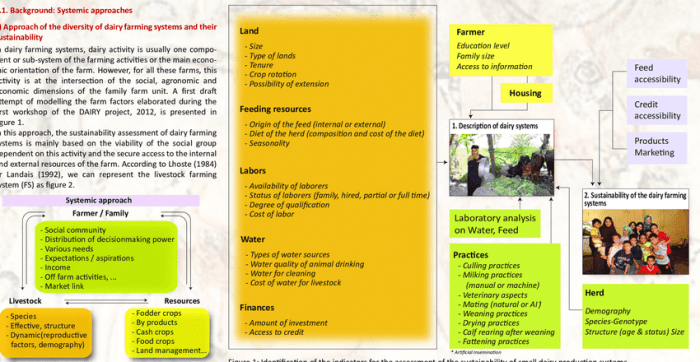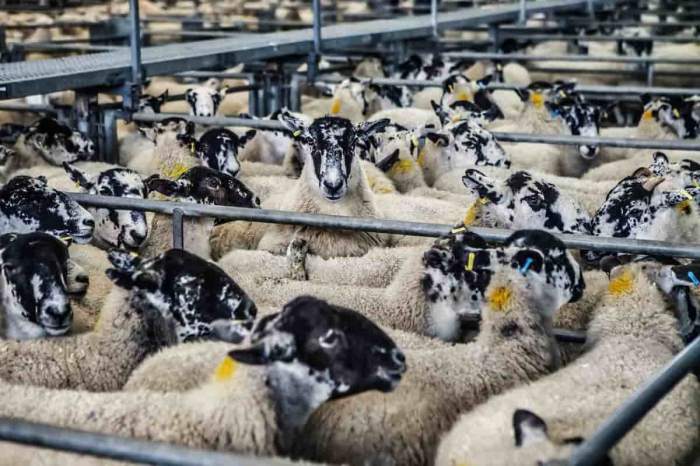Organized systems of agriculture the maintenance of herds – Organized systems of agriculture and herd maintenance are fundamental pillars of sustainable and efficient agricultural practices. This discussion delves into the benefits, challenges, and interdependence of these systems, showcasing successful examples and emerging trends that shape the future of agriculture.
By implementing organized agricultural systems, farmers can enhance productivity, reduce costs, and ensure the well-being of their herds. From rotational grazing to precision feeding, innovative technologies and practices are revolutionizing herd maintenance, leading to healthier animals and increased profitability.
Organized Systems of Agriculture
Organized agricultural systems provide a structured approach to farming, ensuring efficiency, sustainability, and increased productivity. These systems encompass a range of practices, including crop rotation, land management, and livestock integration, aimed at maximizing resource utilization and minimizing environmental impact.
Successful examples of organized agricultural systems include the traditional farming practices of the Maya civilization, which utilized terraced farming, irrigation, and intercropping to sustain a large population. Modern systems, such as precision agriculture, employ technology and data analysis to optimize crop production and reduce inputs.
Challenges in Implementing Organized Agricultural Systems
- High initial investment costs
- Resistance to change from traditional practices
- Lack of access to technology and knowledge
- Environmental constraints
The Maintenance of Herds

Maintaining healthy herds is crucial for agricultural systems, ensuring livestock productivity, genetic diversity, and disease control. Proper herd maintenance involves a comprehensive approach, including breeding, nutrition, and disease management.
Methods for maintaining healthy herds include selective breeding to improve genetic traits, providing balanced nutrition to meet specific requirements, and implementing vaccination and disease prevention programs.
Technologies and Innovations in Herd Maintenance
- RFID tags for livestock identification and tracking
- Automated milking systems
- Precision feeding technologies
- Disease surveillance systems
Interdependence of Organized Systems and Herd Maintenance

Organized agricultural systems and herd maintenance are interdependent aspects of successful farming. Organized systems provide a framework for managing herds, while healthy herds contribute to overall system productivity and resilience.
Positive Impacts
- Improved feed utilization and reduced waste
- Increased animal health and welfare
- Enhanced genetic diversity
Negative Impacts, Organized systems of agriculture the maintenance of herds
- Increased susceptibility to disease outbreaks
- Potential for environmental degradation
- Ethical concerns related to intensive animal production
Case Studies and Examples

Regions that have successfully implemented organized agricultural systems and herd maintenance include:
- The Netherlands: Known for its advanced dairy farming practices and precision agriculture
- New Zealand: A global leader in sustainable sheep and cattle production
- Kenya: A model for community-based livestock management and conservation
Future Trends and Innovations: Organized Systems Of Agriculture The Maintenance Of Herds

Emerging trends in organized agricultural systems and herd maintenance include:
- Precision livestock farming using IoT and data analytics
- Sustainable grazing practices and regenerative agriculture
- Genetic engineering for improved animal traits
- Alternative protein sources to reduce reliance on livestock
Frequently Asked Questions
What are the key benefits of organized agricultural systems?
Organized agricultural systems offer numerous benefits, including increased productivity, reduced costs, improved resource management, and enhanced animal welfare.
How does herd maintenance contribute to agricultural success?
Healthy and well-maintained herds are essential for agricultural success. They ensure optimal productivity, reduce disease transmission, and contribute to the overall sustainability of farming operations.
What are the emerging trends and innovations in organized agricultural systems and herd maintenance?
Emerging trends include precision agriculture, data-driven decision-making, and the use of artificial intelligence to optimize herd management practices.